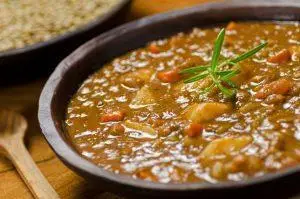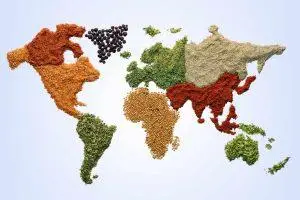There are many Jewish traditions and rituals involving food following the passing of a loved one, during the seven-day period of mourning called Shiva. Learn about some of the most common traditions, and ways that we can help guide you through them.
 The meal eaten by the family and often close friends, following the burial service is commonly known as the meal of condolence. In Hebrew, it is called the Seudat Havara’ah (meal of comfort or consolation).
The meal eaten by the family and often close friends, following the burial service is commonly known as the meal of condolence. In Hebrew, it is called the Seudat Havara’ah (meal of comfort or consolation).
After a funeral service concludes at the Beth El Mausoleum, many choose to hold their meal of condolence immediately afterward, in one of the banquet rooms at Temple Beth El. This takes the burden away from the grieving family who can then use their home as a respite rather than as a place to entertain guests. They also feel that they are not alone in their grief.
This meal, provides a source of healing and consolation. Our Mausoleum Director, Mike Sirowitz can assist families during this difficult time. He can connect them with the temple’s in-house caterer. He will advise them of the menu and vendor choices. He can help with all of the arrangements. He also is an excellent resource for guests of other faiths who are attending a funeral. Mike is happy to answer questions regarding the appropriate protocol for sending food during the Shiva period.
A Look at the Traditions of the Jewish Meal of Condolence
Traditionally, mourners are served the meal of condolence by relatives, or friends at home. An alternative is to have it elsewhere such as the synagogue banquet room. It is considered a mitzvah to prepare such a meal for those who mourn. If this is not possible, the mourner may prepare the meal themselves. The meal of condolence is the second formal expression of consolation. The first, is the parallel rows of friends through which the bereaved walk as they depart from the gravesite.
Upon returning from a funeral, ancient Jewish ritual calls for mourners, to wash their hands with water from a pitcher placed outside the door. Then the meal of condolence may commence.
For convenience, here at the Beth El Mausoleum, we have a washing station available for mourners to utilize prior to heading to the meal of condolence location.
The Symbolism of the Jewish Meal of Condolence Food
Whether held in a sacred space like a synagogue, or at home – there are certain symbolic elements of the Jewish meal of condolence. Many of them have a history that goes back thousands of years to biblical times.
Customarily the meal includes hard-boiled eggs or other round foods, like a bagel, challah or rolls. Round foods represent the cycle of life and renewal must continue. The egg is the only food that hardens the longer it is cooked. That underscores that human beings must learn to steel themselves when death occurs.

Another symbolic food is the lentil. Lentils are especially significant, because unlike most beans, they have no eye. The symbolism is that the deceased are no longer being seen. In ancient Jewish history, it is said that the lentil stew Jacob cooked was meant for his father Isaac. Isaac was mourning the death of his father Abraham (Jacob and Esau’s grandfather). According to the book, The Legends of the Jews Volume 1, Rabbi Louis Ginzberg explains that “the round lentil symbolizes death… as the lentil rolls, so death, sorrow, and mourning constantly roll about among men, from one to the other.” Any other simple, easily digestible food, like deli meats (cold cuts) and salads (coleslaw/potato salad) and a hot or cold beverage may be served.
Jewish Meals of Condolence Foods Around the World
Because food sustains life, it is a central part of many religious symbols, rites, and customs in Judaism. Interestingly there are some tasty variations in the foods chosen for Jewish meals of condolence around the world. They have many things in common, but also are unique. These foods can be incorporated in a meal of condolence, no matter where you live.
- The USA: Bagel platters with a variety of spreads (cream cheese, lox, tuna fish, egg salad, whitefish salad) deli meat sandwiches or salads, all are a staple after a funeral or during the Shiva period.
- Israel: Bagels might be replaced by bourekas (a Turkish savory pastry) and rugelach. Ashkenazi Israeli Jews might serve a similar, crustier bagel (beigaleh.)
- Middle Eastern Jews: Pita bread or ka’ak, a ring-shaped bread that is a bit like a biscuit in texture. It is sprinkled with sesame seeds or spiced with a mix called hawayej. It is a Yemeni ground spice mixture which can contain cumin, black pepper, turmeric, and cardamom.
- Sephardic (Spanish) Jews: Huevos haminados, (eggs slow-cooked overnight.)
- Persian Jews: Kuku sabzi (herb frittata), where the herbs or greens symbolize renewal.
- Yemen: A bowl of soup for each guest.
- Bukhara Jews: (modern-day Uzbekistan) a full meal including sweets.
- Iraq: Everyone eats together, recites a blessing over fruits and vegetables, but not over the bread.
Food for the Shiva
Once that first meal of condolence concludes, there are no food restrictions for mourners. Some may refrain from anything associated with happiness and festivity, like wine. However, this is not prohibited.

Suggested items for a Shiva basket are: baked goods and desserts, fresh fruit, dried fruit and nuts or chocolates. A Shiva platter usually contains cooked meats, fish and/or specialty salads. If the mourners keep a Kosher home, it is imperative to choose Kosher food to send. Otherwise you can send non-Kosher baskets/trays of food.
Since Biblical times, food has played a large role in the Jewish mourning period. Cuisine choices may be varied and have evolved, but the traditions and rituals of food in comforting the mourner remain steadfast. All of the components of the meals of condolence are part of the process of healing.
The Beth El Mausoleum and Mausoleum Director, Mike Sirowitz along with our Temple Beth El clergy are available to answer any questions you may have. They are also there to help in the days following a loss. The Beth El Mausoleum welcomes anyone who wishes to learn more.




